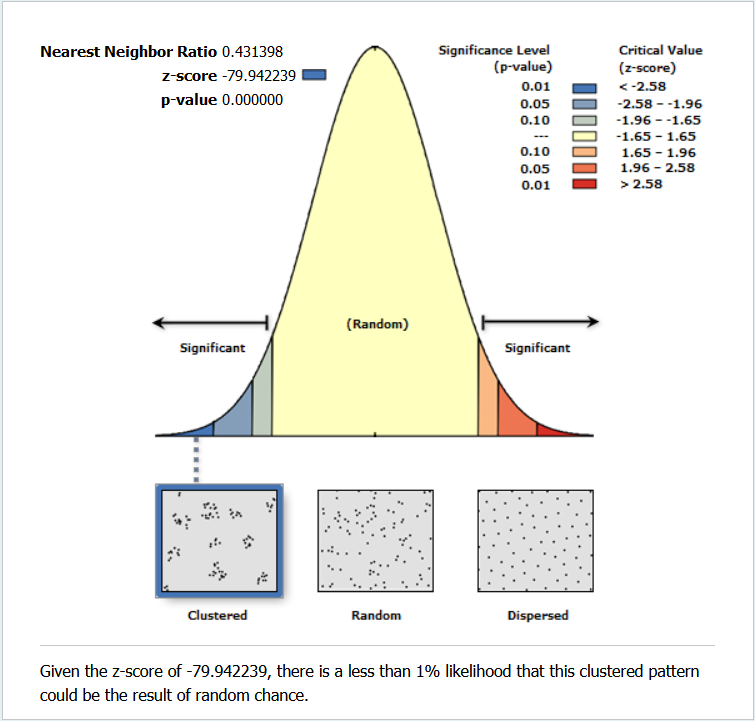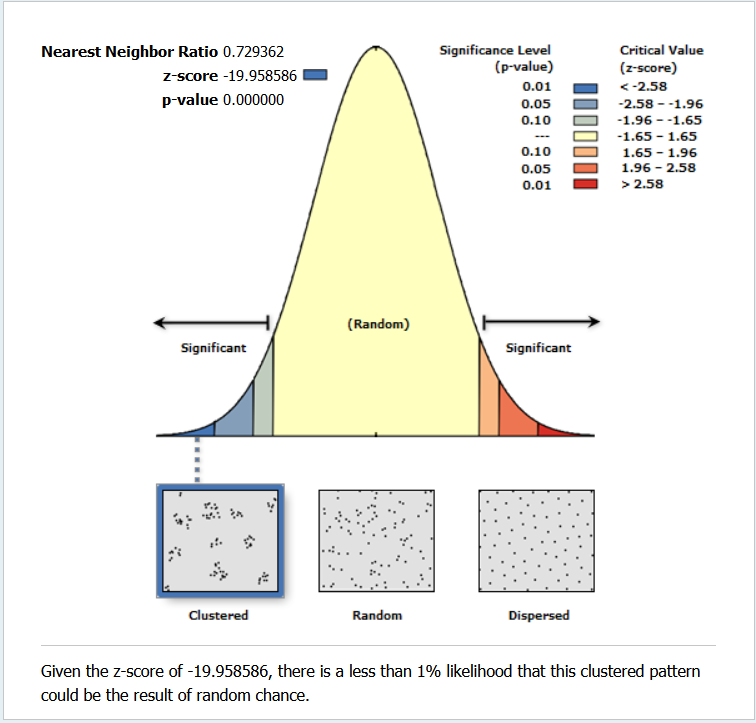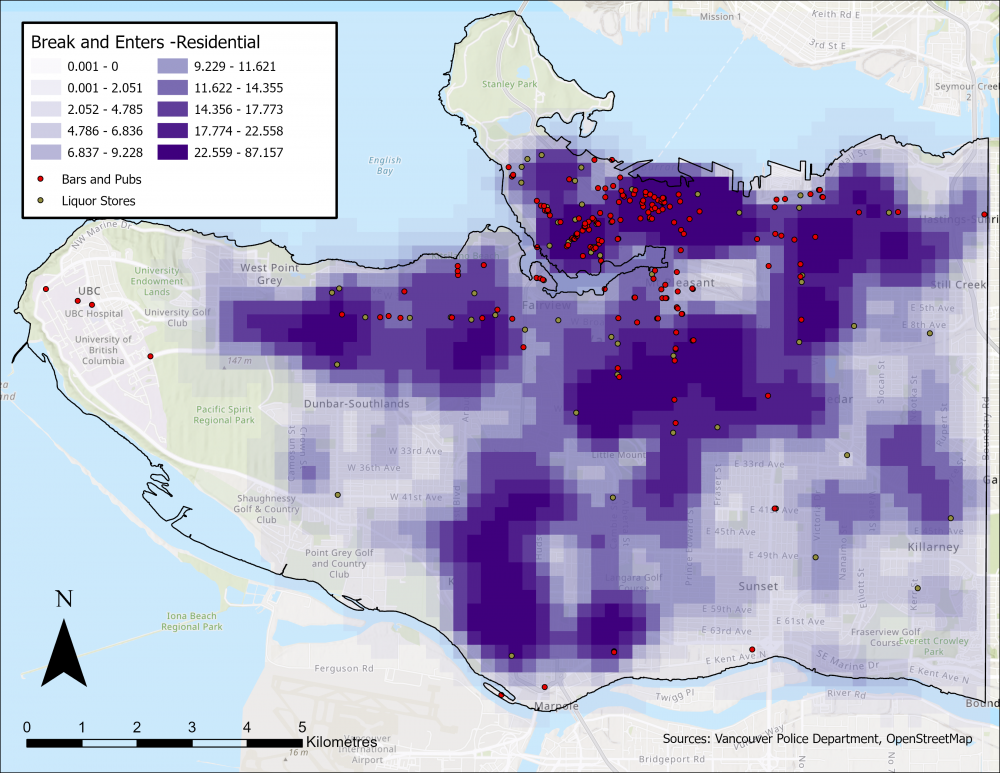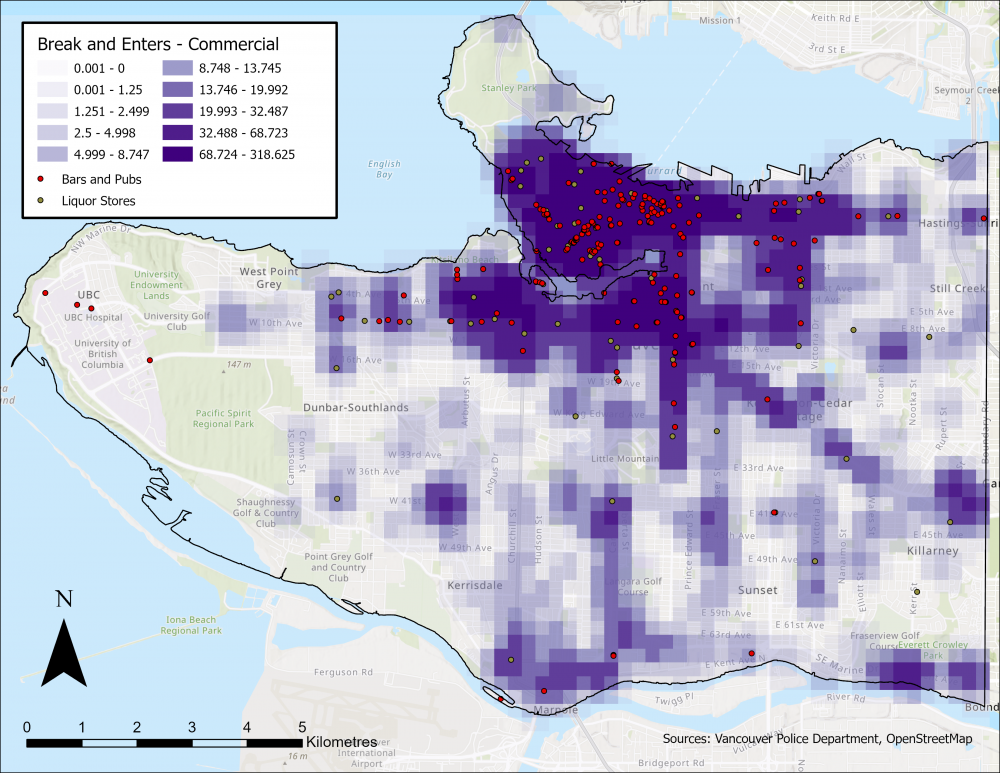From the nearest neighbour analyses, all three types of crime showed that the patterns of incidence are clustered around each other. Among the three types, the analysis shows that residential break-and-enters exhibit the lowest levels of clustering.

Mischief results

Break-and-enter residential results

Break-and-enter commercial results
On a map, the results look like this:

Mischief results

Break-and-enter residential results

Break-and-enter commercial results
From the results of the kernel density analyses, the maps display that all three types of crimes see high numbers of incidences in the city centre. There are some reasons why this could be the case. The first of these reasons is that the central area is denser in general, both in people and in the number of alcohol establishments. In the three maps, bars and pubs are concentrated in the city centre, with clusters around Main Street, Kitsilano, and east of the city centre. With people gathering in large numbers, some intoxicated, there is a potential for conflict between people. And with limited inhibitions, these conflicts can turn violent. In the context of mischief incidents, it could mean damage to property due to a conflict.
Another factor that could be playing in the results is zoning. Since the alcohol establishments tend to be located where the land is zoned to allow commercial use, these areas would likely see higher numbers of incidents. In the break-and-enters results, it seems to show slight differences in the number of incidents within the city centre between the West End and Downtown, with the numbers seeming to be especially high around Yaletown. As the West End is more residential compared to the rest of the city centre, there would be fewer alcohol establishments around the area.
Finally, there may be socio-economic factors at play. In all three maps, the Downtown Eastside is shown to exhibit high numbers of mischief and break-and-enters. The area is known to be very poor, with many issues affecting its residents, such as addiction, poverty, homelessness, and so on. In addition, there is a high concentration of bars and pubs in the area, which would mean alcohol is accessible to the residents. However, what could also be happening is conflict between the locals and people who come down to the bars to have some drinks. The conflicts may be a result of lowered inhibitions and sense of judgement, or due to socio-economic difference between the attendees and the locals.
I could potentially go further with studying alcoholism, public intoxication, and crime in Vancouver. For example, I could look further and establish what the rates per capita are. If I had better data, I would also look at the date and time of the crimes occurring, as the alcohol establishments would likely witness higher revenue on Friday and weekend evenings, when people are celebrating the end of the workweek. In addition, it may help to establish which incidents can be attributed to crime or not. If I had better data, I could look into other violent crimes that happen in the public sphere, such as assaults.